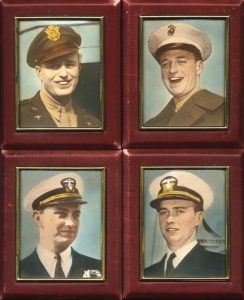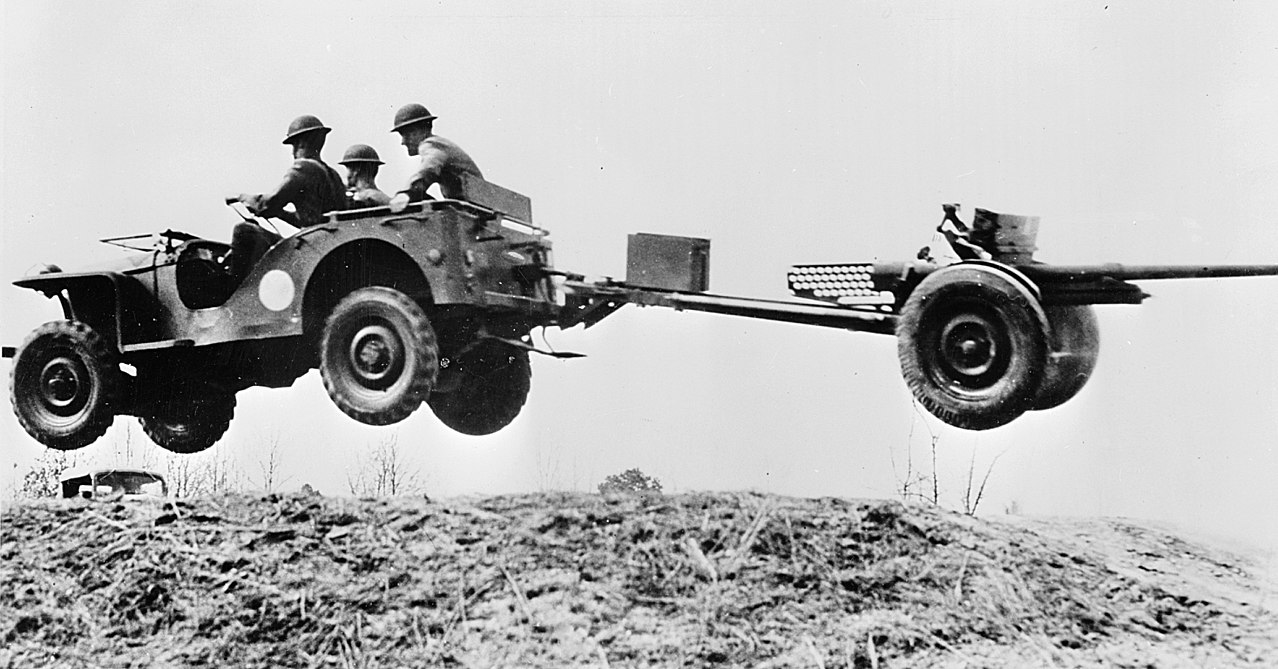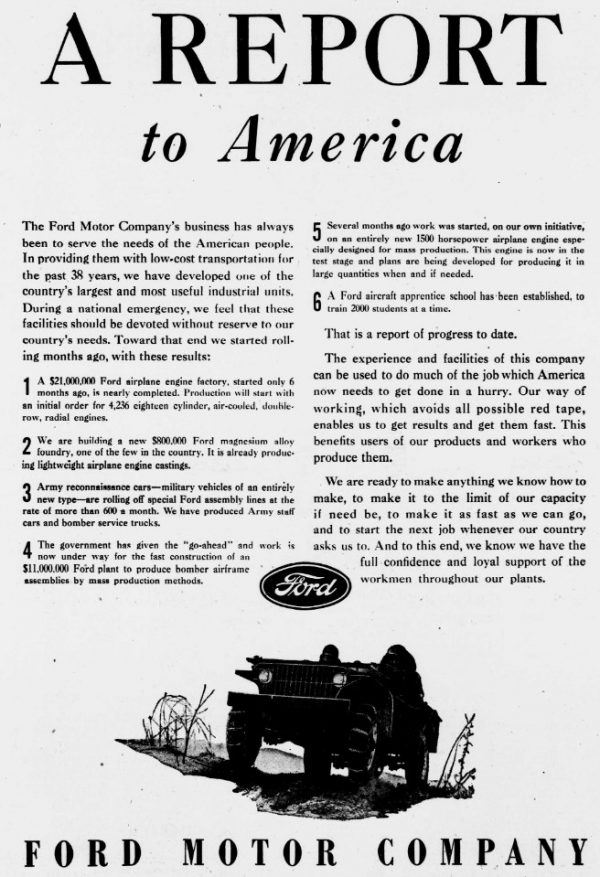Chronicle Commentary: March 17, 1941
Due to the tremendous amount of work required to move a website, I have fallen substantially behind in posting Chronicle content. There is a lot to catch up on, and we can start with this full-page ad from yesterday’s paper:
The jeep grew from the “Army reconnaissance car” to a brand of its own, perhaps more beloved by its drivers than any other vehicle. While multiple people and companies were responsible for the jeep, Karl Probst was its creator, taking just two days to come up with the design. On Sept. 23, 1940, only 49 days after the government requested a lightweight reconnaissance vehicle prototype, the Bantam Reconnaissance Car left Bantam American’s Butler, Pa. factory and headed for the proving grounds at Camp Holabird (near Baltimore, Md.) where they handed Uncle Sam the keys to the world’s first jeep.
German blitzkrieg tactics had revolutionized combat, and our armed forces would need lots of these 1/4-ton 4×4 vehicles — and fast — if we were to keep up. The War Department sent Probst’s design to Willy’s-American and Ford so that all three companies could produce 1,500 models for field-testing — which was taking place at this point in 1941. Ford’s advertisement above claims to be stamping out 600 jeeps a month in addition to their other military products, and by war’s end Willy’s and Ford (Bantam ended up making the trailers) will build 680,000 jeeps during the war, with nearly a third going to Britain and the Soviet Union via lend-lease.
As far as where the iconic name came from, no one really knows. The Ford model was the GP (“G” for government and “P” denoted 80-in. wheelbase), which sounds like “jeep…” or perhaps from its “general purpose” vehicle classification… or the fact that new soldiers (and sometimes equipment) was called jeeps. Speaking from experience, green Air Force firemen were sometimes referred to as jeeps — short for “Just Enough Education (to) Pass.”
Roosevelt sons

March 14’s paper reported that all four of Pres. Roosevelt’s sons are now serving as officers in the armed forces. John, the youngest, was commissioned an ensign in the Navy’s Supply Corps, and will serve aboard the aircraft carrier USS Wasp in the Pacific Theater.
Franklin Jr. has just received orders to duty aboard the destroyer USS Mayrant, effective April 3 and will eventually be named the ship’s executive officer before being given command of the destroyer escort USS Ulvert M. Moore in 1944.
Elliott, serving as a captain in the Army Air Corps is currently scouting locations for American air bases Newfoundland, Greenland, and other remote northern locations. Later, he will participate in secret reconnaissance overflights of Vichy French territory in Africa in preparation of American landings in 1942. In August, Elliott and Franklin Jr. will join their father at the Atlantic Conference. Elliott will hold multiple reconnaissance commands during the war and flew 89 combat missions.
James, the eldest, was a lieutenant colonel in the Marine Corps Reserve, but resigned his commission in 1940 to enter active duty as a captain. Until January, 1941 he was a battery commander in the 2nd Battalion, 10th Marines at Camp Elliot, Calif., but is named Assistant Naval Attaché for the American Embassy in London, England, and he is assigned to British Army Headquarters, Middle East where he secretly assures local leaders that the United States will enter the war, then moves on to intelligence work for Col. Bill Donovan. James then helps pave the way for the creation of the Marine Raider program, and is picked as executive officer of Lt. Col. Evan Carlson’s 2nd Raider Battalion (Carlson and the Roosevelts knew each other from Carlson’s duty as commander of the Marine detachment at the president’s retreat at Warm Springs, Ga.). James participates in the Makin Island landing, where he earns the Navy Cross and Silver Star, before being named as commander of the 4th Marine Raider Battalion.
Unrelated to anything in our 80-year-old “news cycle,” I came across personnel records of certain celebrities that the National Archives made available to the public. There are lots of digital records to look at; I browsed enlistment records for Christy Matthewson, John Basilone’s paperwork for his promotion to sergeant (signed by Maj. Chesty Puller), Neil Armstrong’s college transcripts… there’s a lot in there and it’s definitely worth checking out.

